Special Report
19 Groceries Driving Up Your Bill the Most During Pandemic

Published:
Last Updated:

COVID-19 brought much of daily life in the U.S. to a halt in March and April of 2020, with stay-at-home orders prompting Americans to flock to their local grocery stores to stock up on essentials. As demand for groceries grew and many supply chains were interrupted, prices rose.
Groceries were 4.5% more expensive in June 2020 than they were in February 2020, the month before the coronavirus pandemic was declared a national emergency in the United States. And the prices of some items rose more than twice as much.
To determine the 19 food items driving up grocery bills the most during the coronavirus pandemic, 24/7 Wall St. analyzed changes in the consumer price index for all urban consumers from February to June 2020 for over 100 grocery items using data from the Bureau of Labor Statistics.
In order to avoid double counting and ambiguity, we excluded categories of groceries that include one or more items that also fall into another category. For example, we included the BLS’ category “beef and veal” but did not include the more granular categories of “uncooked beef roasts,” “uncooked beef steaks,” and “uncooked ground beef.” We also excluded broader catch-all designations, such as “snacks,” or those categorized by the BLS as “other.”
Consumers finally got some relief in July, when prices dropped 1.1% from June. This was due in part to a sharp decline in the price of meat. Many meat supply chains were disrupted in earlier months, when workers in several processing facilities across the country contracted the virus. In addition to cutting into the U.S. meat supply, outbreaks in the plants led to relatively high rates of COVID-19 per capita in the towns in which the plants are located. These are the cities in every state where COVID-19 is growing the fastest.
Americans have been going to the grocery store not just because they want to stock up, but also likely because some have had to prepare more food than usual. Many restaurants have been forced to limit diners to delivery only or outdoor seating due to social distancing restrictions, and others have shuttered for good because they could no longer afford to stay open. These are the 35 most popular restaurants that won’t reopen after the pandemic.
Click here to see 19 groceries driving up your bill the most during pandemic.
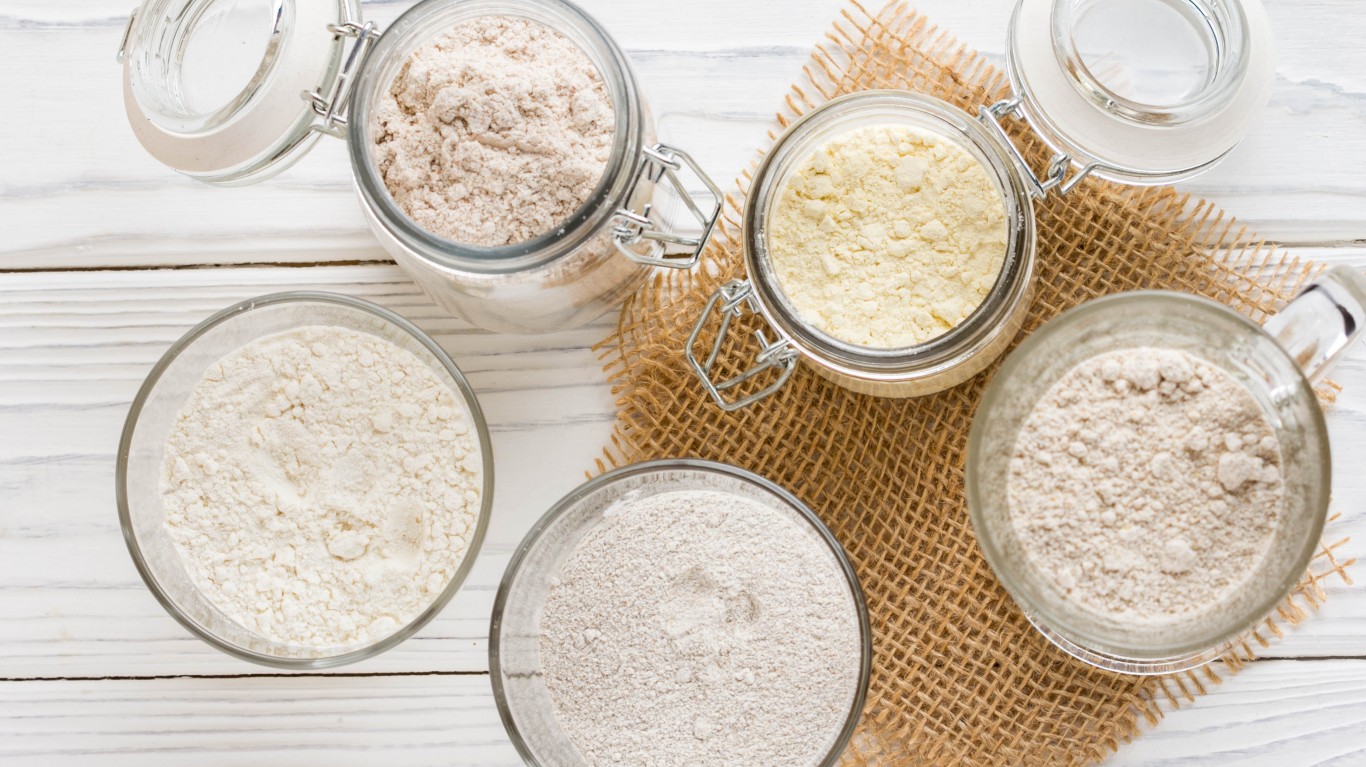
19. Flour and prepared flour mixes
> Price increase, February-June 2020: +4.5%
> Priciest month for grocery item since 2010: May 2013
The price of flour and prepared flour mixes rose by 4.5% between February, a month before the coronavirus pandemic was declared a national emergency in the United States, and June. As is the case with many items on this list, the price increase for flour is likely tied to a surge in demand.
Flour is a critical ingredient in baking — an activity that surged in popularity as Americans have been confined to their homes during the pandemic. Vermont-based company King Arthur Flour reported a 2,000% increase in flour sales in March 2020 compared to the same month the previous year.
[in-text-ad]

18. Shelf stable fish and seafood
> Price increase, Feb. — June 2020: +4.6%
> Priciest month for grocery item since 2010: May 2020
The price of shelf stable fish and seafood, which includes items like canned tuna and sardines, climbed by 4.6% from February to June. During that period, these grocery items hit their highest price point in over a decade. Shelf stable fish and seafood are one of several grocery categories on this list that can last for extended periods of time without spoiling. Sales of many grocery items with a long shelf life spiked during the initial phases of the pandemic, likely contributing to the increase in price.

17. Fresh sweetrolls, coffeecakes, doughnuts
> Price increase, February-June 2020: +4.8%
> Priciest month for grocery item since 2010: June 2020
Fresh sweetrolls, coffeecakes, doughnuts is one several breakfast food categories to rank on this list. The 4.8% price increase of these and other breakfast items at the grocery store is likely tied to increased demand. With a record number of Americans working from home after lockdown measures have been instituted, demand for items such as sweetrolls and doughnuts — that under normal circumstances might be purchased during a commute — spiked at grocery stores (for home consumption – optional. These items cost more in June 2020 than in at least the last 10 years.

16. Carbonated drinks
> Price increase, February-June 2020: +5.1%
> Priciest month for grocery item since 2010: June 2020
Like other items on this list, there was a surge in soft drinks sales during the pandemic. Increased demand may help explain the 5.1% increase in the price of carbonated drinks from February to June. As of June 2020, carbonated drinks cost more at grocery stores than they have at any point since at least 2010.
[in-text-ad-2]

15. Soups
> Price increase, February-June 2020: +5.1%
> Priciest month for grocery item since 2010: April 2020
Rising in price by 5.1% between February and June, soup is one of several items on this list that, during the COVID-19 pandemic, has hit its highest price in U.S. grocery stores in the last 10 years. Soup sold in grocery stores has a long shelf life and can be consumed many months after purchase. Early in the pandemic, soup sales were up over 100% from the same time the previous year.

14. Frozen fruits and vegetables
> Price increase, February-June 2020: +5.5%
> Priciest month for grocery item since 2010: June 2020
Frozen fruits and vegetables are one of just 16 types of grocery items that increased in price by more than 5% between February and June. Unlike many of the other groceries on this list, the price of frozen fruits and vegetables over the past decade has not increased as much as the overall price of all groceries, only spiking recently. The price of frozen fruits and vegetables increased by 3.6% from February 2010 to February 2020, while the price of all items has increased by 19.3%.
[in-text-ad]

13. Bacon, breakfast sausage, and related products
> Price increase, February-June 2020: +5.5%
> Priciest month for grocery item since 2010: June 2020
Because of issues related to supply chain and demand in China that caused the price of pork to increase in recent months, the price of bacon, breakfast sausage, and other related products has also increased. The recent price increase of these breakfast meats of 5.5% between February and June 2020 is part of a longer-term increase. From February 2010 through February 2020, the price of these products increased by close to 30%.

12. Frozen fish and seafood
> Price increase, February-June 2020: +5.6%
> Priciest month for grocery item since 2010: Sept. 2014
Like shelf stable fish and seafood, frozen fish and seafood can be kept for long periods of time. Foods that last for long periods have been in high demand since the pandemic began in the U.S. The consumer price index of frozen fish and seafood increased by 5.6% from February to June.

11. Breakfast cereal
> Price increase, February-June 2020: +5.9%
> Priciest month for grocery item since 2010: Oct. 2015
The price of breakfast cereal had been declining since late October 2015 and was just 1.8% more expensive in November 2019 than in February 2010. Once people started working from home and were more likely to eat breakfast there as well, cereal prices began to spike. From each month from February through June 2020, the price of breakfast cereal increased by more than 1%, relative to a decade ago, growing by a total of 5.9%.
[in-text-ad-2]
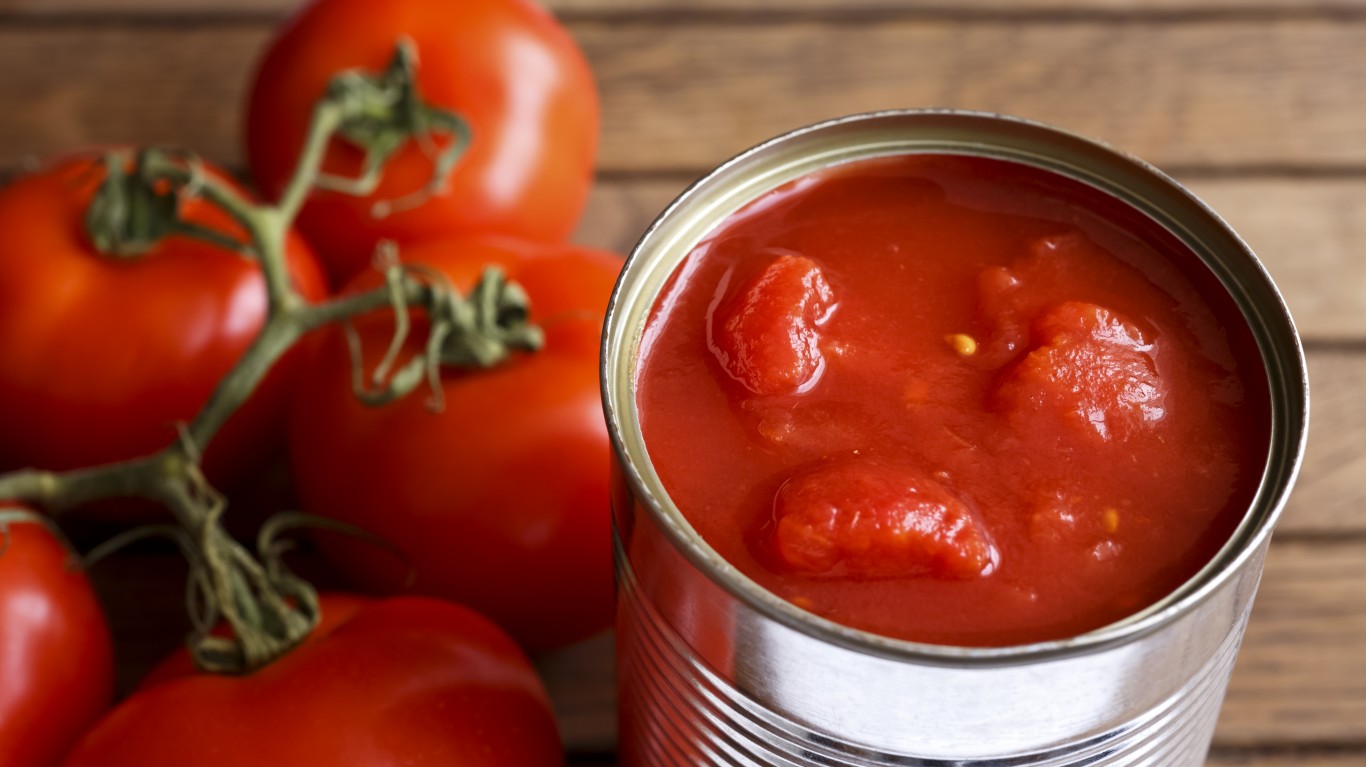
10. Canned vegetables
> Price increase, February-June 2020: +6.4%
> Priciest month for grocery item since 2010: June 2020
In spite of the recent spike, the price of canned vegetables has not increased nearly as much as the typical grocery item over the past decade. Even with the 6.4% price increase from February to June 2020, canned vegetables are just 12.3% more expensive as compared to a decade ago. Comparatively, the typical grocery item was 18.9% more expensive in June 2020 than in February 2010.
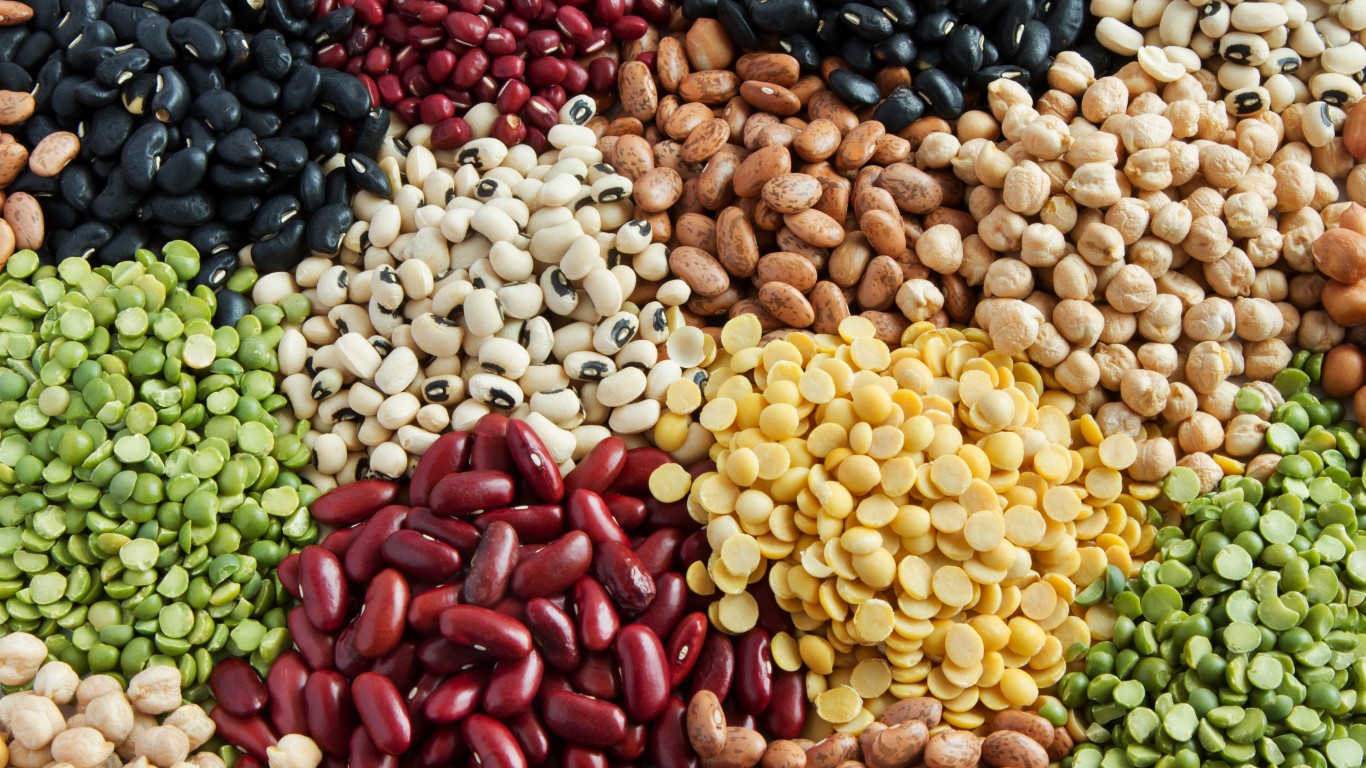
9. Dried beans, peas, and lentils
> Price increase, February-June 2020: +7.4%
> Priciest month for grocery item since 2010: April 2015
Dried beans, peas, and lentils are one of just nine types of groceries that have increased in price by more than 7% since the beginning of the pandemic in the U.S. Americans bought over 200% more dried beans so far in 2020 than they did over the same period in 2019, and this increased demand led to higher prices. Like many of the other groceries on this list, dried beans, peas, and lentils can be stored for long periods of time, and Americans have been more likely to buy these kinds of items during the pandemic.
[in-text-ad]

8. Peanut butter
> Price increase, February-June 2020: +7.9%
> Priciest month for grocery item since 2010: Jan. 2013
Peanut butter is one of several shelf-stable, non-perishable grocery items that have become significantly more expensive since the COVID-19 pandemic reached the United States. Through the beginning of 2020, the price of peanut butter had been in decline for seven years. But between February 2020 and June 2020, the price rose by 7.9%.
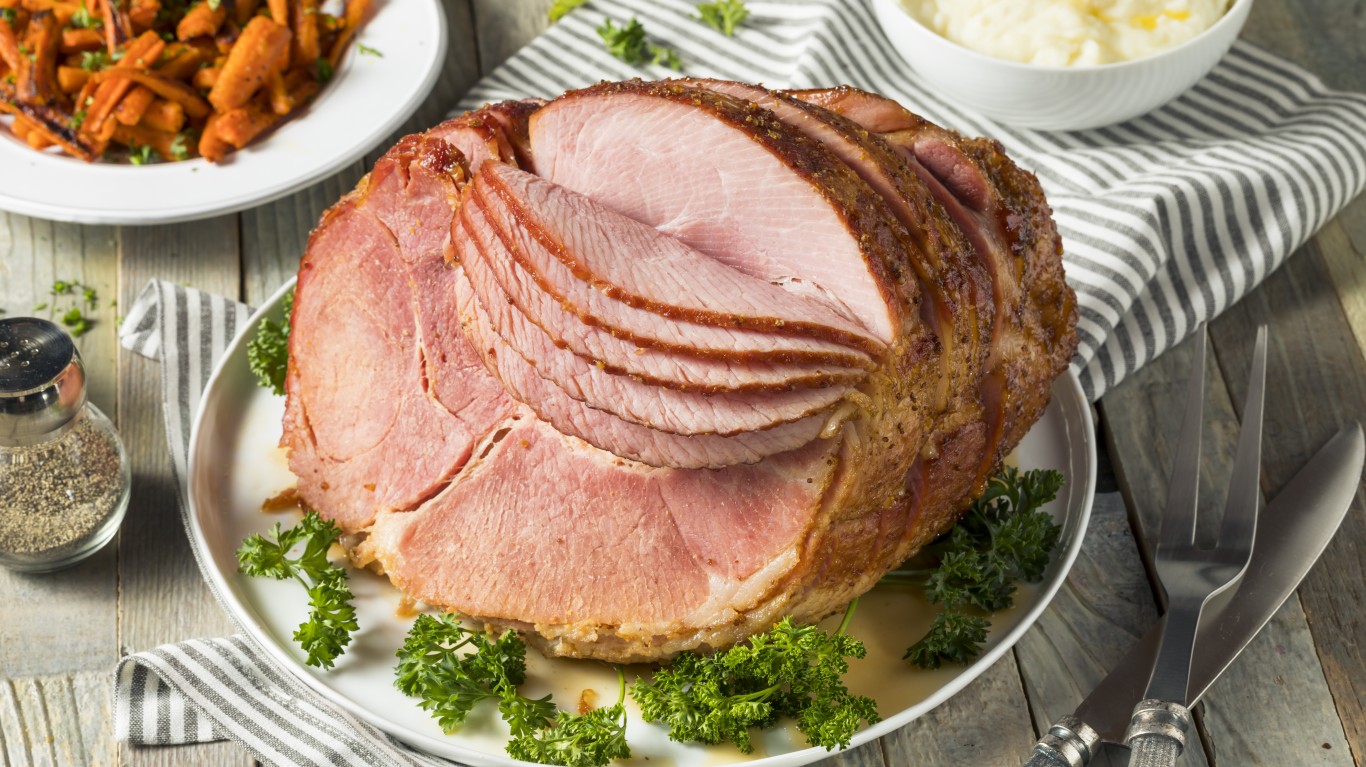
7. Ham
> Price increase, February-June 2020: +8.7%
> Priciest month for grocery item since 2010: Oct. 2014
The prices of many groceries on this list spiked because of increased demand, but not all. Some groceries, including many meats like ham, increased in prices because of issues with supply. A number of U.S. meat and poultry plants have closed in recent months because of COVID-19 outbreaks, limiting production, which led to increased prices. Ham was 8.7% more expensive in June than it was in February, nearly double the 4.5% price increase of all foods that are prepared in the home.

6. Potatoes
> Price increase, February-June 2020: +8.7%
> Priciest month for grocery item since 2010: June 2020
Though potatoes have had the eighth highest price increase of any grocery item since February, the spike in price may not be due to COVID-19. Potato prices ebb and flow with the seasons, typically peaking in August and hitting their lowest point of the year in December. Though potato prices are cyclical, prices over the past decade have increased more than all food item prices during that time. Potatoes were 36.4% more expensive in June 2020 than they were in February 2010, as compared to the 18.9% increase to the typical grocery item.
[in-text-ad-2]

5. Frankfurters
> Price increase, February-June 2020: +8.8%
> Priciest month for grocery item since 2010: June 2020
Even before the pandemic reached the United States, Frankfurter prices were rising, increasing in price by 28.2% from February 2010 to February 2020, Well above the comparable 19.3% increase in prices for all grocery items. Like many other meat products, frankfurters were much more expensive in June than they were in February of 2020. Production at a number of meat production plants stalled because of COVID-19 outbreaks.
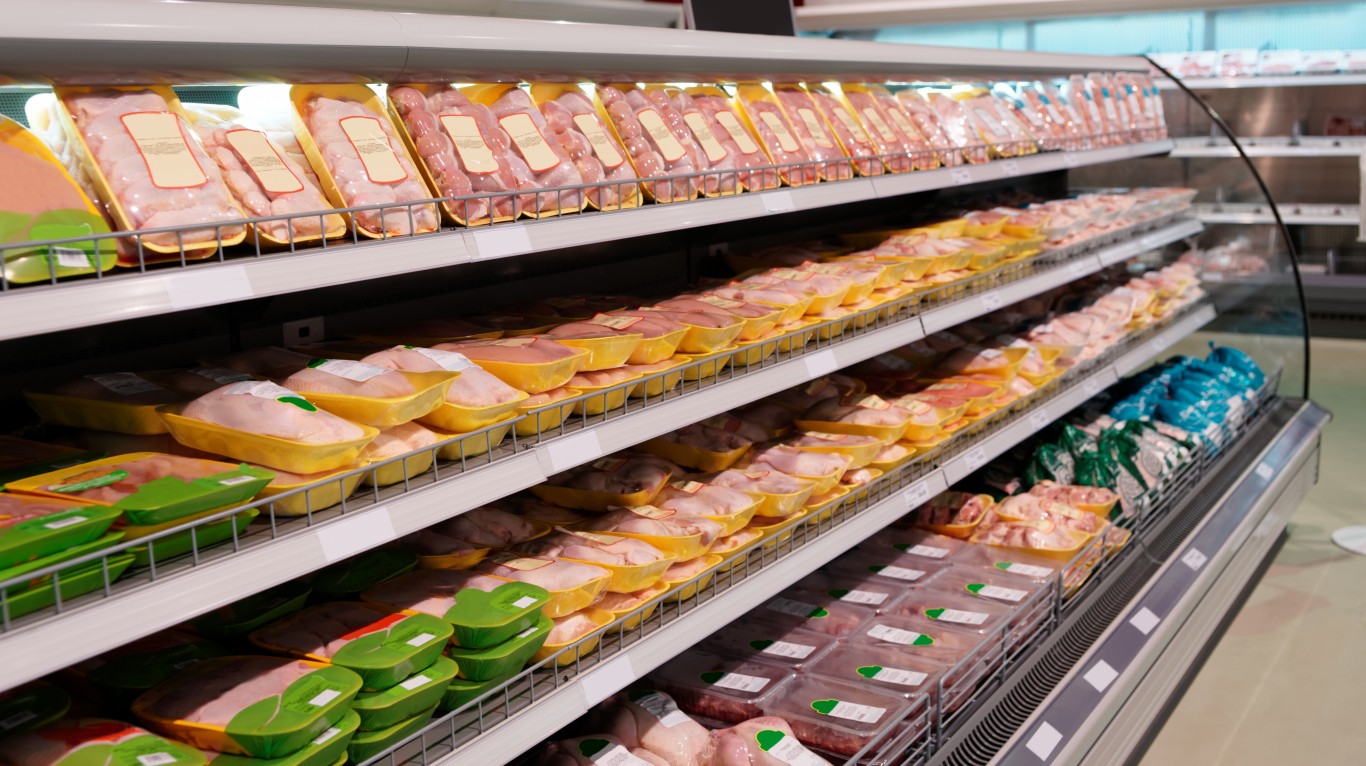
4. Chicken
> Price increase, February-June 2020: +9.4%
> Priciest month for grocery item since 2010: June 2020
Chicken is one of just four grocery items that have gotten more than 9% more expensive amid the pandemic. The nation’s chicken supply has been hampered as meat processors at several locations contracted COVID-19, forcing plant closures. This decreased supply, amid spiking demand, led to a 9.4% increase in chicken prices from February 2020 to June 2020.
[in-text-ad]

3. Citrus fruits
> Price increase, February-June 2020: +10.3%
> Priciest month for grocery item since 2010: August 2018
The reason that almost every item on this list is increasing in price can be directly tied to COVID-19 — whether people are stocking up on the food because it is non-perishable or because the pandemic has interrupted supply. Citrus fruits, however, are an exception. Citrus fruits prices tend to start increasing around March each year because of seasonality. The over 10% increase in price for citrus fruits from February to June of 2020 is not uncommon. Citrus fruits tend to peak in price around September-October and bottom out around March, when most varieties are no longer in season.

2. Pork chops
> Price increase, February-June 2020: +19.9%
> Priciest month for grocery item since 2010: June 2020
Pork chops were nearly 20% more expensive in June 2020 than they were four months prior. Like many other meat products on this list, the supply of pork was impacted by the pandemic, when workers at meat processing plants fell ill with the virus and production was halted.

1. Beef and veal
> Price increase, February-June 2020: +22.7%
> Priciest month for grocery item since 2010: June 2020
Beef and veal had by far the largest percentage price increase of any grocery product so far throughout the COVID-19 pandemic, spiking by 22.7% from February to June 2020. For comparison, the typical grocery item increased by 4.5% during that time.
Even before the pandemic, the price of beef and veal had increased by more than double the percentage increase of the typical grocery item since 2010. Once meat production plants were shut down due to workers contracting COVID-19, meat and veal prices spiked even more. The price of beef and veal was 79.2% higher in June 2020 than it was February 2010 even as the typical grocery item increased by just 18.9% in that time.
Finding a qualified financial advisor doesn’t have to be hard. SmartAsset’s free tool matches you with up to 3 fiduciary financial advisors in your area in 5 minutes. Each advisor has been vetted by SmartAsset and is held to a fiduciary standard to act in your best interests. If you’re ready to be matched with local advisors that can help you achieve your financial goals, get started now.
Thank you for reading! Have some feedback for us?
Contact the 24/7 Wall St. editorial team.